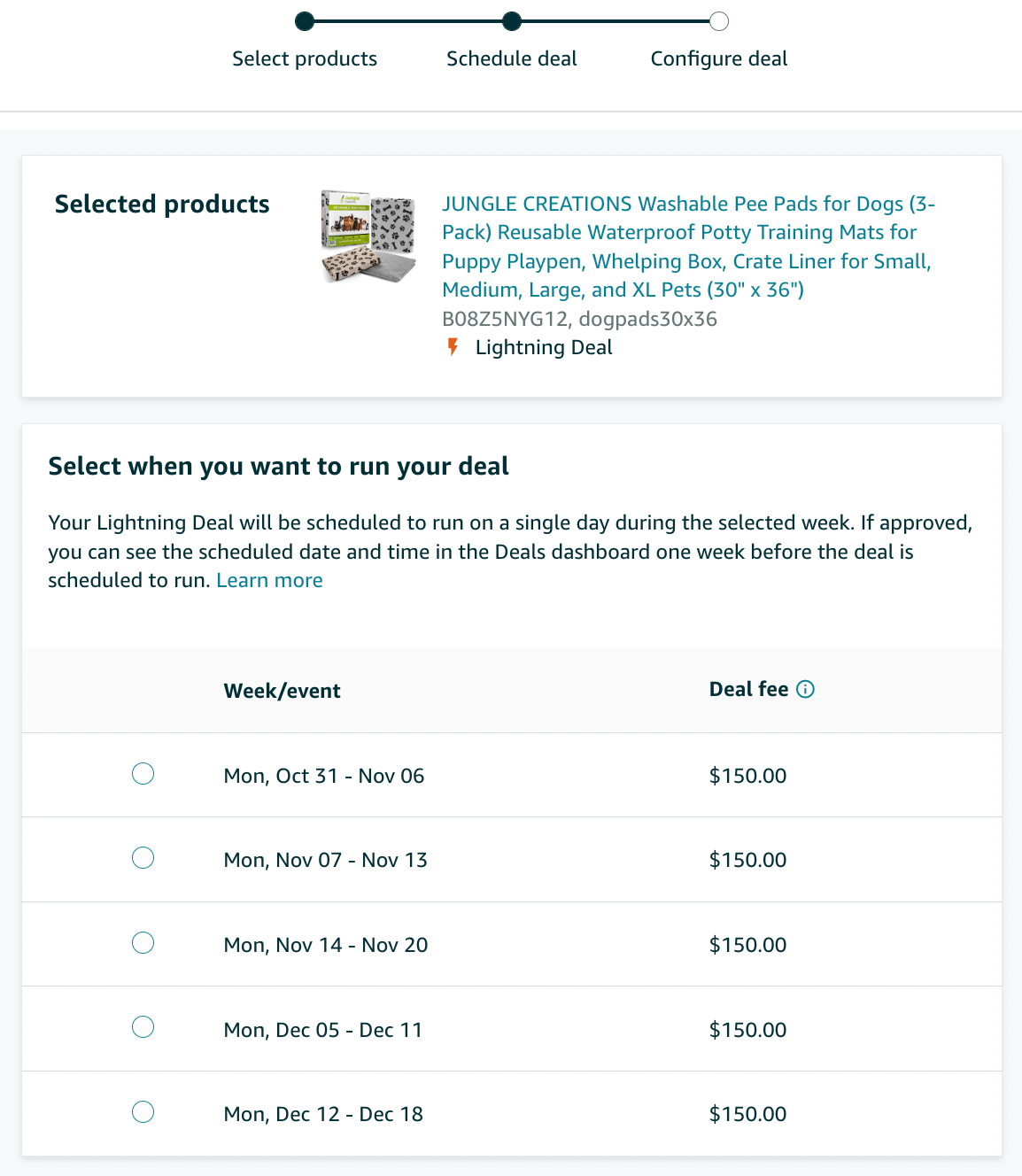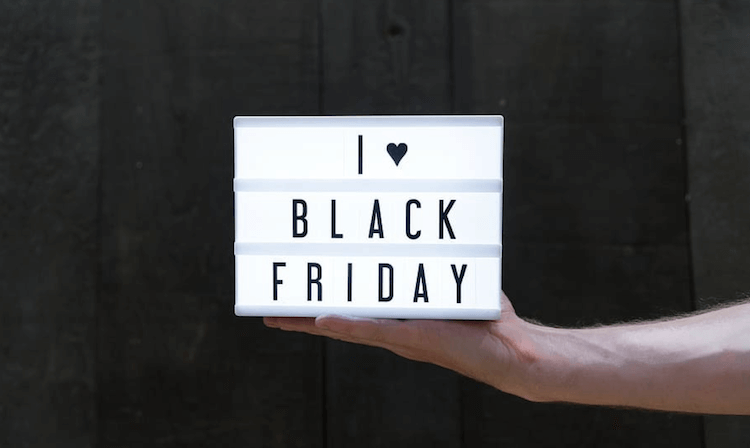For Amazon sellers, it might seem like the holidays are always around the corner. Typically starting with the major Black Friday and Cyber Monday shopping weekend (and often before), this is one of the most critical times of the year for Amazon sellers to boost sales and profits. And with more consumers shopping online — and on Amazon – than ever before, Amazon sellers need Black Friday and Cyber Monday selling tips in order to make the most of it.
Why do you need a Black Friday Marketing Strategy in 2022?
It’s a critical season for sellers every year
Black Friday, Cyber Monday, and the rest of the holiday season are notoriously huge sales events for Amazon sellers. About half of Amazon sellers said that Black Friday and Cyber Monday are crucial to their bottom lines, and 64% of sellers said the month of December is as well.
Key shipping dates will sneak up on you
Smart Amazon sellers like yourselves are already ahead of the crowd and have started to ship in new inventory for the holiday season. If you haven’t yet, you need to do so ASAP. If you are not able to get inventory to FBA on time, you also have the option to create an FBM offer on your listings and fulfill orders yourself or with a third-party fulfillment center.
We’ll go over the dates Amazon wants to receive your inventory by in the next section.
Customers flock to Amazon to find good deals
With increasing inflation and economic uncertainty, customers are out looking for deals on the products they love. According to our recent Consumer Trends Report, 53% of consumers are compelled to make a purchase when they receive a deal, and 63% of consumers do research to find deals on the products they want.
Being properly stocked up paired with enticing discounts or deals are your keys to a successful Black Friday and Cyber Monday.
How to prepare for Black Friday
What steps should you be taking to ensure you’re ahead of the 2022 holiday season? Here are seven steps to follow to help you prepare for Black Friday and Cyber Monday.
- Review inventory restock limits
- Order enough inventory to meet seasonal demand
- Ship your inventory by critical dates
- Optimize your product listings
- Optimize your PPC campaigns
- Plan your promotions
- Monitor sales and performance
Step 1: Review restock limits
First, you’ll want to determine what restock limits are for each storage type. Storage types include standard-size storage, oversize storage, apparel storage, and so on.
This is an important step because it will dictate how much inventory you can send into Amazon’s warehouses (you can learn more here about that as well as alternatives to Amazon fulfillment).
To find out what your restock limits are, go to Inventory > Shipments in Seller Central.

If you are subject to inventory restock limits, you should begin contacting third-party logistics companies (3PLs) now.
Step 2: Order enough inventory to meet seasonal demand
Start working with your suppliers as soon as possible so you have enough lead time between your product’s production and delivery date. Doing this step well in advance will give you enough time in case of any unforeseen problems that may arise.
This should be done 7-9 weeks before each sales event date. At this point in time, your inventory should already be on the way to Amazon for Black Friday and Cyber Monday. If not, start shipping product now!
Step 3: Ship your inventory to FBA by critical dates
To enure you stay in stock during Black Friday, Cyber Monday, and Christmas, you need to be sure your inventory arrives to Amazon’s fulfillment centers by these key dates:
- Black Friday and Cyber Monday: November 2
- Christmas: December 1
Step 4: Optimize your product listings
Make sure your listing is the best it can possibly be. The two key factors you should focus on are keyword/text optimization and visual/photo optimization.
1. Keyword Optimization
Keywords are how your customers will find your products. By adding relevant, high-volume keywords within your listing, you help your product rank and show up in organic search. Think about how you would search for this type of product.
Use tools like Jungle Scout’s Keyword Scout to find the best possible keywords to add to your listing. A great thing about Keyword Scout is that you can search by your product or by doing a reverse-ASIN search of similar or competing products to see exactly what they’re ranking for.
Keyword Scout will show you relevant, high-volume keywords as well as estimated advertising costs for each keyword. For more tips on optimizing your keywords, check out our 2022 Amazon Product Listing Optimization Guide.
2. Photo optimization
Product photography is one of the most important aspects of a strong Amazon listing. Your images are what will draw people into your listing as well as keep them on your listing.
Adding unique and high quality visual effects to your photos will better explain your product without the customer having to read a bunch of text. Using infographics is a great way to do this. Adding text and other important product attributes to the images will help give the customer all the information they’re looking for.
Plus, over 50% of Amazon shoppers are purchasing from their phones using the Amazon app. The first thing those customers will see on the app are your images. Can you add a comparison graph, sizing chart, ingredient list? Think of everything your customer would want to know and add that to the images.
Bottom line: Great photography and lifestyle imagery will help sell your product.
In addition, Amazon now also allows non-brand registered sellers to add videos to their listings. Work on creating a 30-60 second video you can add to your listing.
Conduct new keyword research to see if there are any keywords you are missing. You should also run advertising reports to see what keywords are converting well in your PPC campaigns and add those into your listings.
Make sure your product information is clear, accurate, and thorough. The point is to prevent the customer from clicking out of your listing. Provide them with as much information about your product as possible.
Step 5: Optimize your PPC campaigns
Make sure your ads are optimized for conversions and that you’re not wasting money on keywords that get little to no sales. In other words, remove keywords that are spending higher than your ACoS (advertising cost of sale) threshold as well as ones that are not converting into sales.
Make sure your ads are constantly running before, during, and after Black Friday and Cyber Monday. You’ll notice a big influx of customers shopping at all times during these weeks, so you want to make sure your products are being shown at the top of the search results!
Check out our guide on PPC optimization best practices.
Step 6: Plan your promotions
Black Friday and Cyber Monday are all about great deals and customers saving money on their favorite products. To succeed during these massive sales events, you need to offer some type of discount or deal to help increase conversions.
Thankfully, Amazon offers various deal types you can run during these events.
And because Amazon is known for running deals the entire week of Black Friday and Cyber Monday, it’s important to try and schedule these deals now. That way you can lock in a date.
To schedule a deal go into your Seller Central account > Advertising > Deals.

Once on the Deals page, select ‘Create a new deal.’
You can choose to run a 7-day deal, which will promote your deal for seven days in a row, or a Lightning Deal, a 4-hour flash sale. You should be aware, though, that running a deal during the week of Black Friday or Cyber Monday may cost you more than a typical deal since sales are so competitive at this time.
For example, let’s take a look at Lightning Deals (these are deals advertised on Amazon’s deal page).
Choose ‘Select’ to pick the date, and you’ll be given several weeks to choose from. Your Lightning Deal will be scheduled to run on a single day during the selected week.

Aside from the lightning deals, you can also create coupons as well as a Prime Exclusive Discount. Try running a coupon with a percentage discount so customers can feel like they’re getting a great deal on your product.

Step 7: Monitor your sales and performance
Finally, always remember that you can’t leave your products to fend for themselves, or you risk losing out on sales (or losing money). Keep an eye on how well your products are performing and make adjustments to your listing or PPC campaigns as needed.
If your inventory is selling out at a faster rate than expected, plan to send in more FBA inventory or use an FBA alternative warehouse to ship out FBM orders if your FBA storage has been exceeded.
If your sales are slower than expected, look at your PPC campaigns to see if bids can be increased for certain keywords.
Also, experiment with different promotional strategies to help move inventory faster.
You will want to monitor your overall account health and performance too. Take care of any issues that arise immediately so there is no down time on your listings. We suggest using Jungle Scout Alerts to keep you informed about critical Amazon product changes so you can take action fast — even when you’re not logged into Jungle Scout.
Final Thoughts
The 2022 holiday season is going to be busier than ever before. So, to be fully prepared for the rush of sales, make sure you follow the steps outlined above. And if you have any other questions or tips regarding Black Friday and Cyber Monday, let us know in the comments below.


 1 Comment
1 Comment
One comment on “Black Friday Marketing Strategy – Amazon FBA Selling Tips for 2022”
For Prime Day you suggest to send 3x the inventory we sold in January. What is the rule of thumb for Cyber Monday/Black Friday? 4x?